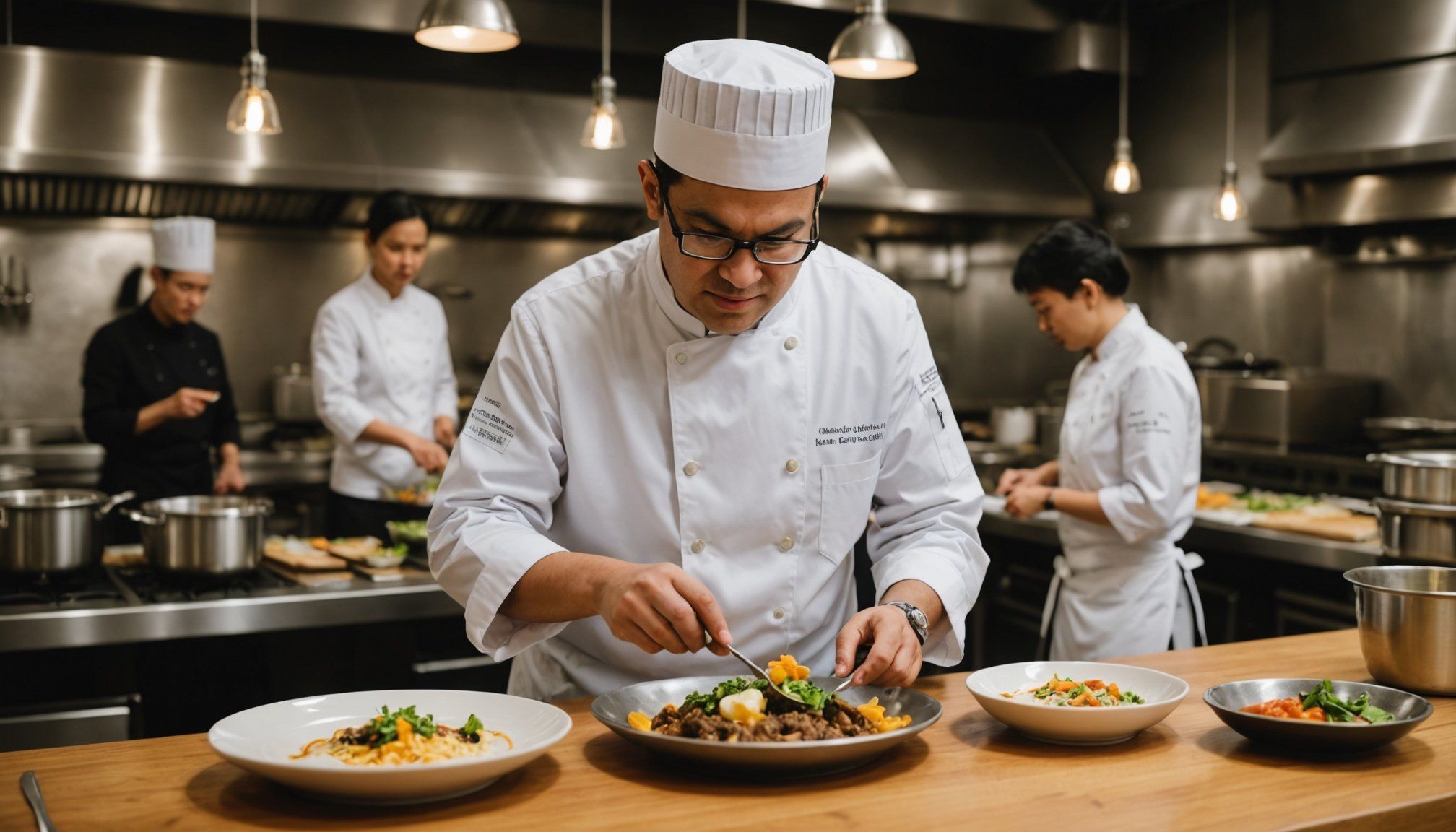Understanding the Needs of Visually Impaired Individuals
Visual impairment significantly impacts daily life, posing unique challenges that require understanding and adaptation. For those with visual impairment, sensory needs become crucial in everyday activities, including culinary experiences. Ensuring inclusivity in culinary settings encompasses more than just accommodating physical needs; it involves creating an environment that fully engages the senses. This approach can make dining not only accessible but also enjoyable and fulfilling.
Inclusivity in culinary experiences demands empathy and awareness. When chefs and restaurant staff understand and appreciate the sensory needs of visually impaired individuals, they can tailor services to create a welcoming atmosphere. This involves considering how the texture, aroma, and arrangement of food can enhance sensory engagement.
This might interest you : Seamless culinary harmony: innovative strategies to blend your indoor and outdoor cooking areas
Empathy plays a vital role in this process. It’s about seeing beyond the impairment and recognising the abilities and desires of visually impaired individuals to enjoy culinary moments just like anyone else. By cultivating a culture of awareness, we build environments where everyone is appreciated and catered to. Understanding visual impairment and meeting sensory needs doesn’t just benefit those directly impacted but enriches the experience for all by fostering inclusivity and awareness.
Multi-Sensory Culinary Techniques
Exploring multi-sensory cooking unveils innovative ways to enhance taste and engage diners. This approach goes beyond mere flavour, focusing on full sensory involvement. A key technique is flavor layering, where chefs carefully combine ingredients to amplify taste profiles, creating depth and complexity in dishes. This artful integration not only amplifies the gustatory experience but also nourishes the soul by connecting multiple senses.
In the same genre : Transforming your kitchen: creative strategies for an allergen-free and healthier home
Incorporating aroma into the culinary experience is equally significant. Smell, being intrinsically linked to taste, enhances perception and enjoyment. By using herbs, spices, and aromatic oils, chefs elevate dishes, transforming them from ordinary to extraordinary experiences. This heightened sensory engagement is vital for inclusivity, especially for those who rely more on senses beyond sight.
Textural variety plays a crucial role in tactile engagement with food. Diverse textures add interest and satisfaction, encouraging diners to interact with their meal more dynamically. Techniques such as sous-vide and flash-freezing can enhance the crunchy, creamy, or chewy aspects of dishes. By prioritising tactile elements, the dining experience becomes more inclusive, catering to all sensory preferences and needs, and benefiting everyone who seeks a rich and rewarding culinary adventure.
Enhancing the Dining Environment
Creating an accessible dining experience requires thoughtful adjustments to improve sensory engagement for all guests, including those who are visually impaired. One starting point is designing a sensory-friendly environment. This involves thoughtful attention to the dining area’s layout, such as clear pathways with tactile guiding cues and consistent furniture arrangements to assist spatial awareness.
Sound plays a pivotal role in shaping the ambiance for visually impaired individuals. Background noise should be minimal to reduce distractions and promote clear communication. Implementing a softer acoustic design can enhance auditory comfort, aiding in a more inclusive dining atmosphere.
Incorporating tactile elements is paramount. Using varied textures, both in decor and on the table, provides a richer sensory experience. For instance, providing differently textured placemats or table settings can foster familiarity and ease of orientation.
Attention to detail in lighting is crucial. While keeping sufficient light for those with some vision, it is important that it doesn’t create glare or shadows that might hinder navigation. Adaptations like these highlight the importance of ambiance in crafting a welcoming environment, ensuring visually impaired individuals feel comfortable and included.
Practical Tips for Culinary Engagement
Creating truly inclusive culinary experiences involves more than just adjusting menus; it requires inclusive cooking practices that cater to the needs of visually impaired individuals. Here are some effective culinary engagement tips to enhance food experiences:
-
Simplify Navigation: Ensure kitchen layouts are intuitive and free from obstructions to make it easier for visually impaired chefs or diners to navigate safely.
-
Incorporate Personal Stories: Sharing narratives or stories related to meals can give an emotional connection. This practice not only enriches the dining experience but also fosters empathy and understanding.
-
Focus on Collaboration: Engage with visually impaired individuals directly by asking for their insights and feedback. This helps refine the experience to be more tailored and enjoyable, showcasing the importance of collaboration.
Chefs should also experiment with integrating personal stories into their dishes, using flavours that evoke memories or emotions. This approach deepens connections and transforms meals into more than just sustenance. Regularly seeking feedback from visually impaired diners ensures the continued refinement and inclusivity of culinary experiences. By embracing these strategies, chefs and home cooks can consistently deliver meaningful and accessible dining experiences.
Case Studies and Success Stories
When exploring success stories in the realm of inclusive culinary experiences, we uncover inspiring narratives demonstrating the profound impact these efforts have on visually impaired individuals. Consider the case of a restaurant in London that revolutionised their dining service by integrating multi-sensory elements. By recognizing the unique sensory needs of their clientele, they transformed the traditional dining experience into an inclusive journey of taste, aroma, and texture.
This establishment implemented flavour layering techniques coupled with innovative use of aromas to enhance taste perception, catering to senses beyond sight. Their approach serves as an effective model of how empathy and awareness can elevate culinary practices to be more inclusive.
Another inspiring case is a culinary program specifically designed for visually impaired individuals. This program focuses on hands-on cooking classes, where participants engage in creating dishes, learning vital cooking skills while also fostering social connections. The emotional impact of these experiences extends beyond the kitchen; participants often report increased confidence and community integration.
Such case studies underscore the transformative power of inclusive culinary practices. They not only illustrate the practicability of these methods but also highlight the broad social benefits for participants, setting an insightful precedent for others worldwide.











